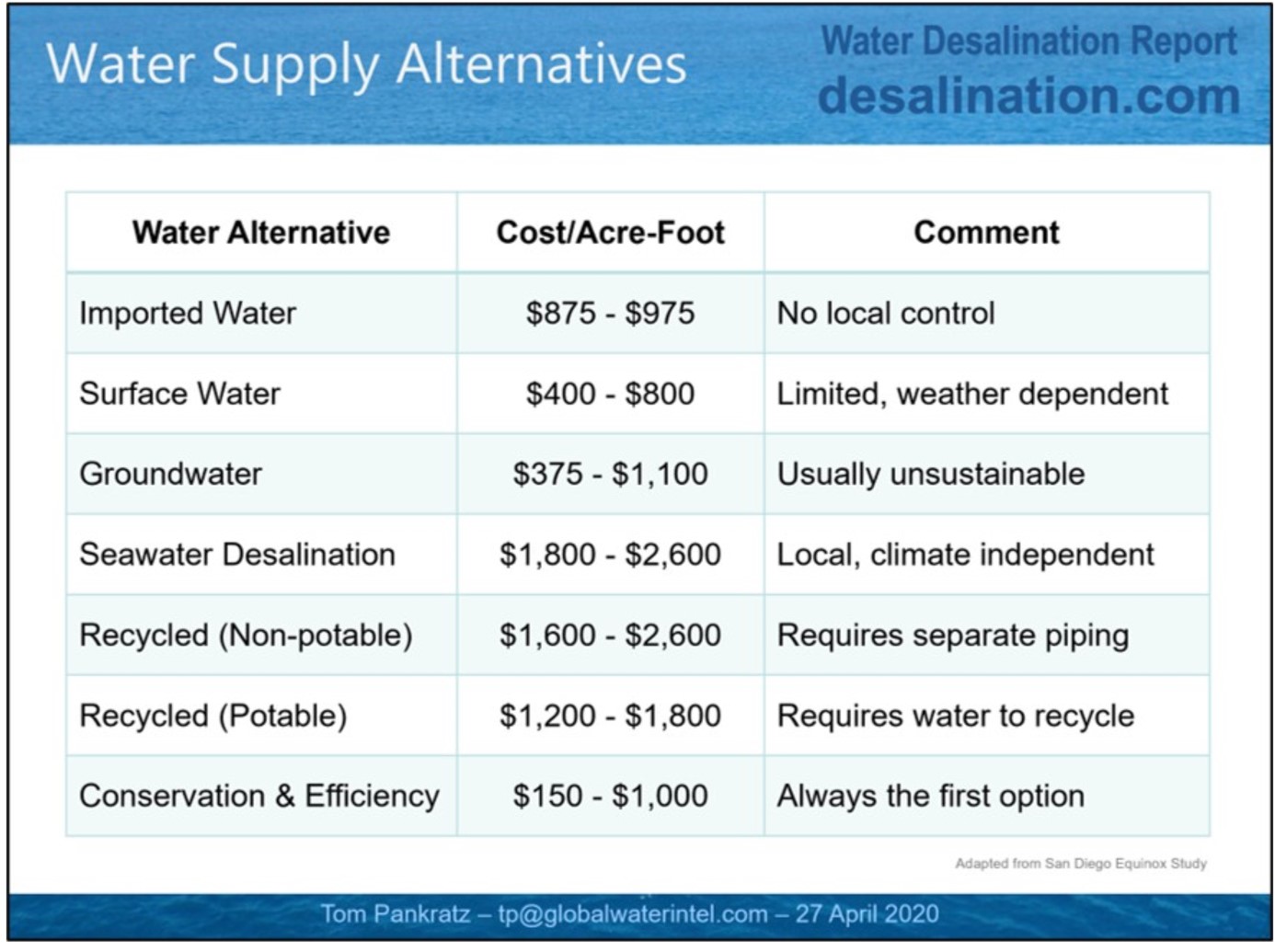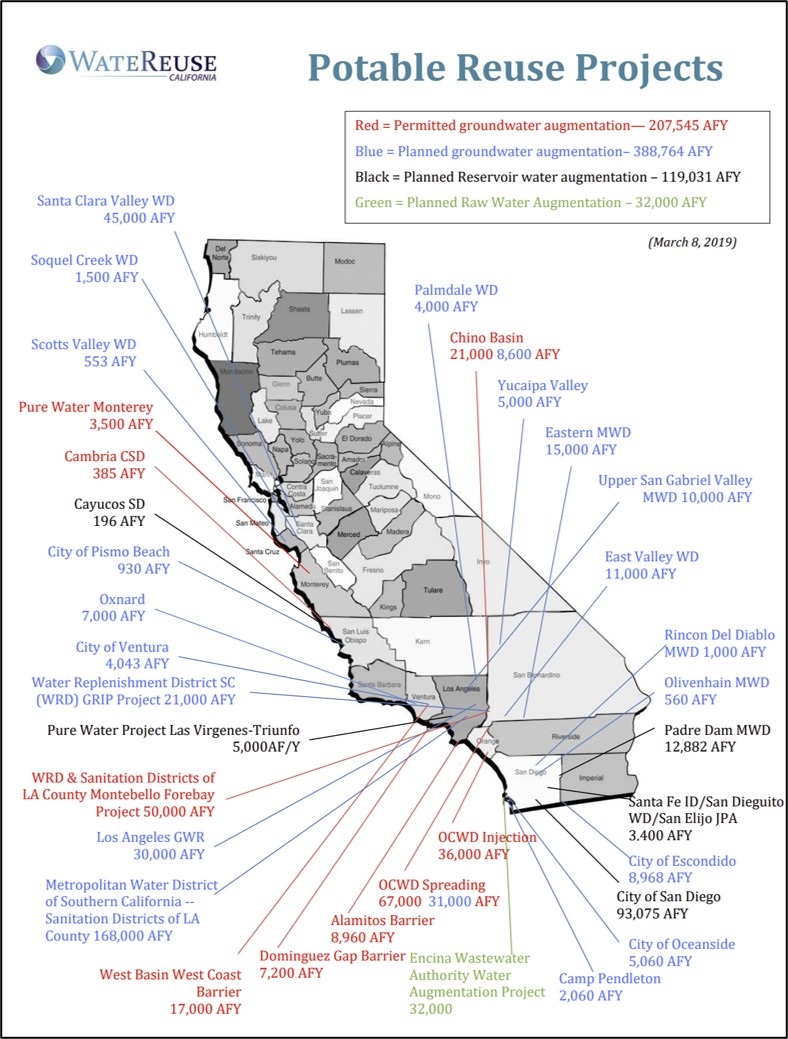Besides rain and snow, which flow to rivers, lakes and groundwater, we humans have also begun to seriously explore various forms of water reuse. Some of the reuse options include water recycling for irrigation and industrial uses, and for mixing with potable water after thorough scrubbing and treatment. Other sources of water include stormwater capture and treatment, and desalination of seawater and brackish water.
Recycled water is wastewater that has been cleaned through various physical and chemical treatments to the level needed for its intended purpose. Over the last 30 years, recycled water treated to tertiary standards has become common in many parts of the state. This water is used for landscape irrigation and for various industrial purposes. An emerging and important new source of potable water is called water purification or potable reuse. The state of California has followed a long road to permitting potable water to be used by the public, but after years of study by many reputable scientists, public meetings and comment, and detailed evaluations by interested parties, it is expected that by late 2021 or early 2022, the state will have established the necessary standards to permit potable water to be used in urban settings. This water will be absolutely safe for human consumption. The cost will be less than desalinated water, more than imported water and a lot more than surface or groundwater. But the water will be readily available in urban areas, and thus dependable. Unless living on the International Space Station, however, it will always be blended with water from other sources. A comparison of water costs is in the figure below and on the right, courtesy of Mr. Tom Pankratz.
From a statewide perspective, recycled water helps to diminish the need for as much imported water. Thus, most urban Southern California water districts that import water are planning to decrease their need for as much water from the State Water Project and the Colorado River by increasing recycled water production of all kinds, and have a mix of groundwater, desalination, as much local water as comes their way from the sky or via snow, continued conservation by all users, and explore such potential sources as gray water and on-site stormwater capture.
A summary of California's potable reuse projects are summarized in the figure below courtesy of WaterReUse.
Anne Omsted, Member LWVC Water Committee


